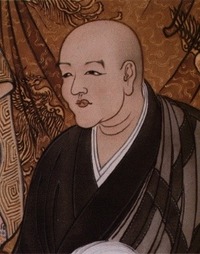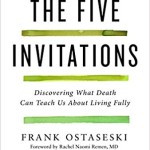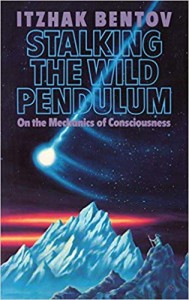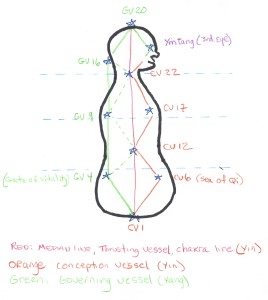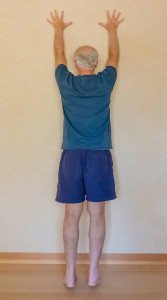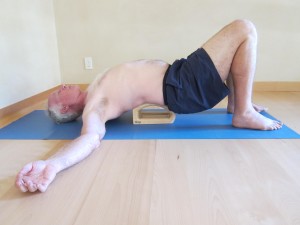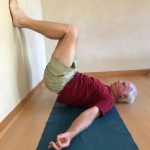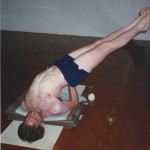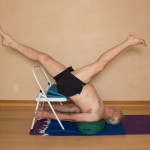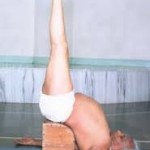1. Dont’ Wait! Begin Now, not later, not tomorrow, not when you feel better, or have more time. Do not squander your life! This breath: pause, relax, open, allow; begin again …. Practice is not just on the mat, but every moment of your life is your practice. Take heed! Awaken! You never know when Lord Yama may come knock knock knockin’ at your front door. Be ready to greet him. Learn your own skandhas and transform them through practice.
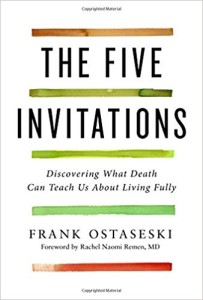 2. Welcome Everything, Push Away Nothing. In a previous post I included the famous Rumi poem, the Guest House, which describes the sense of this second invitation. We tend to seek pleasure and avoid pain, at all levels of existence, but we can never heal the wounds that do not get to see the light of our own discriminating wisdom. Your soul will provide lessons that need to be learned, and they usually involve some type of pain or suffering. Trust that you will be able to face the challenges.
2. Welcome Everything, Push Away Nothing. In a previous post I included the famous Rumi poem, the Guest House, which describes the sense of this second invitation. We tend to seek pleasure and avoid pain, at all levels of existence, but we can never heal the wounds that do not get to see the light of our own discriminating wisdom. Your soul will provide lessons that need to be learned, and they usually involve some type of pain or suffering. Trust that you will be able to face the challenges.
Now in cases of more serious trauma, we may need outside support. Somatic Experiencing, the work of trauma resolution developed by Peter Levine and others is an excellent therapeutic approach to working with embodied trauma. Other types of psychotherapy can also be helpful to hold the larger energy field and help the client modulate their own nervous system. All of the upayas, (the Sanskrit word for ‘skillful means of stabilizing the mind field and opening the heart) are helpful when practiced. We will look at working with the Brahma Viharas as an upaya in the next post.
3. Bring Your Whole Self to the Experience.
Social media has been a disaster when it comes to the third invitation as it has created a forum for people to contrive personalities out of fantasy and feeds the illusion that faults, fears, weaknesses or other unpleasant aspects of our real moment to moment self sense need to be hidden away. Not just from others, but from ourselves as well.
There is wisdom that comes from facing the ‘undesirable aspects’ of our selves. To quote Frank, ” Yet more than once I have found an ‘undesirable’ aspect of myself, one about which I had previously felt ashamed and kept tucked away, to be the very quality that allowed me to meet another person’s suffering with compassion instead of fear or pity.”
My aggressive cancer diagnosis has uncovered all sorts of hidden nooks and cranies of my ‘non’ conscious mind, where fear, shame and other unpleasantries lurk. My practice is to welcome them, and then bring them into the light, holding them lightly and compassionately, but neither ignoring nor getting lost in them. Not claiming this is fun, but necessary.
4. Find a Place of Rest in the Middle of Things
Last July, I had an MRI done on my prostate, and that involved being tied down inside this tubular machine for a half hour or so, with load banging noises and whirring sounds surrounding me. I was supposed to be still so as to not blur the images. This was good practice in finding a place of rest in the middle of things. Sometimes, the chaos comes from the outside, as with the medical world. Sometimes, it comes from the inside, where you own emotions and thinking are creating the chaos. Resting in the middle of things is , of course, meditation practice. Meditation means literally staying in the middle, staying centered, in spite of what is happening around you, or inside you.
This is not an easy practice so it is best to start with simple challenges. Can I sit in a quiet room for 10 minutes, without needing to ‘do’ something. The inner urges to keep busy, to ‘fix the problem’, to ‘improve’, are relentless. The demands from the outer world are equally daunting. Pause, take a deep breath, relax, open to the moment, allow it to be just as it is. Repeat, again and again. The urge to ‘do’ is habitual, but can be transformed through practice.
In the Samadhi Pada, sutras I-12 to I-16, Patanljali gives two practices right away to get the process rolling; abhyasa and vairagyam. Abhyasa is developing stability, the capacity to not be moved’ from your seat’, from your center. Vairagyam is letting go of attachments to habits, beliefs, thoughts and patterns of action that perpetuate suffering.
5. Cultivate ‘Don’t Know’ Mind.
How do we balance the need to know, with deeply recognizing that ultimate mystery is ‘unknowable’. Like all spiritual practice, paradox is at the center of things. When I was first diagnosed with the prostate cancer last July, there were a lot of ‘unknowns’. What type of cancer was it, how long had it been there, and had it spread to anywhere else, were the first of the questions. Then there is conflicting information on just how to find out. Some feel that needle biopsies are dangerous; they can lead to infections and cause the cancer cells to spread. I absorbed that and paused. I had some blood work done to find if there were any metastasized cells in the blood stream. None from the prostate. Good news.
But my PSA (Prostate Specific Antigen, a marker for prostate cancer) numbers were going up. Not good. Following my intuition, I finally decided to do the needle biopsy to get the specific data on my cancer, and fortunately I did not put it off any longer, as the biopsy reports came back with gleason scores of 8 and 9, indicators of aggressive cancer growth. Not good, again, but with good data, a plan of action has been hatched.
After consulting with radiation oncologist Anthony D’Amico at the Dan Farber in Boston, I (we) have decided to undergo a combination of radiation and hormonal therapy. Prostate cancer feeds on testosterone, so I have just begun taking testosterone inhibiting hormones, and will probably be on those for several years. The word is I may begin to have hot flashes, grow breast tissue, gain weight, lose muscle mass and sex drive, and begin to binge watch chick flicks. Not sure about my voice.
The radiation will take place over an eight to nine week period, 5 days a week for 10 minutes each session. I will be doing this in Boston, probably beginning in early March, and there is a place where I can stay for free near the hospital, provided for out-of -town cancer patients. The radiation targets the prostate specifically, the hormones both the prostate and any other place where the prostate cancer cells may have landed. I have a bone scan coming up to see if there are any cancer cells growing in the bones. Because of the cancer, part of the prostate has fused with the rectum, so surgery will not be an option. No clean margins available.
Lots of new and useful information, but the big unknown remains. Dr D’Amico said there is a 70 – 80 % chance that in nine years I could be cancer free. No guarantees, but then again, life doesn’t offer guarantees; just possibilities to learn and grow. Anyone who is alive now knows how chaotic our local slice of the cosmos is right now. We are all in a big ‘don’t know’ moment, so it is a great opportunity to open to not knowing. We can still gather info, make intelligent decisions and lead lives of wisdom and compassion, but ultimately ‘don’t know mind’ can be our place of refuge.
This means the first skandha becomes in invitation to open, not run away. In 1990, during the third Iyengar Convention in San Diego, I was in deep emotional turmoil. I had just left a previous relationship to move in with Kate and repercussions were rippling through our local yoga world. I felt that I was in the middle of a minor nervous breakdown. But I somehow managed to teach my classes and had some extraordinary experiences with Mr. Iyengar, but one day, out of the blue, it seemed to me, he looked at me with those big bushy eyebrows flaring and said “you are always trying to escape’. He caught me totally by surprise and I did not know quite what to make of his comment. Those words left a deep impression and I only recently realized he was referring to that first skandha. He saw me at the abyss but choosing to not fully face it. Given his early years of serious illness, pain and emotional struggle, I’m sure he was very familiar with the first skandha.
There is no escape from the truth of impermanence and any intellectual resolution is totally inadequate. It is a deeply embodied state, where nerves and organs can say yes to their own fragile and yet vitally alive presence. If we can just learn to trust in life and rest there, then the infinite light of the timeless extending out over the cliff invites us to be the ultimate mystery. Emaho!


